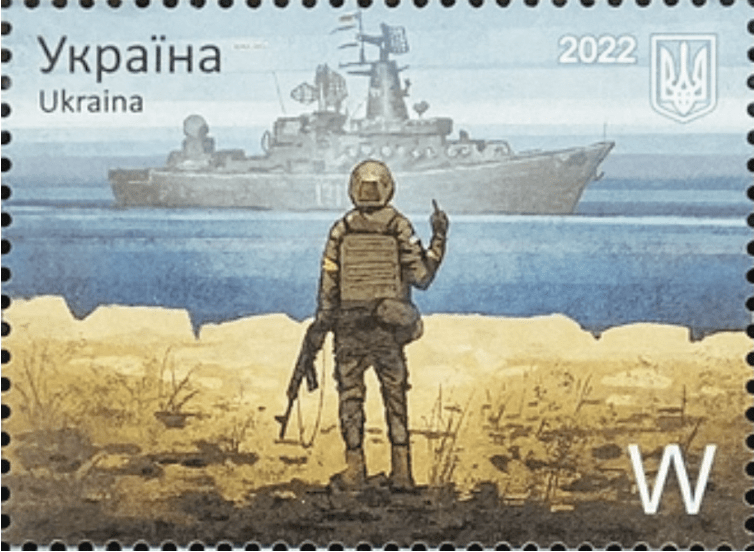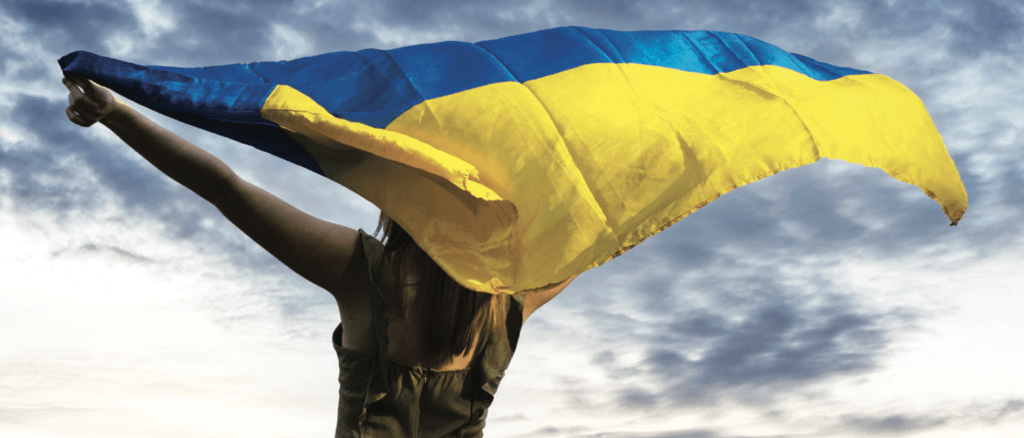Putin is Waging a War on Humanity: Ukraine Needs the Weapons to Fight Back
As Volodymyr Zelenskyi has repeatedly said, Vladimir Putin’s war against Ukraine isn’t just about Ukraine. Russia is seeking an asymmetrical outcome that will weaken the West and compromise the democracy-led world order. That makes military assistance from NATO members, including Canada, asymmetrically crucial. Policy Ukraine specialist, former Ukrainian Canadian Congress President and Earnscliffe Principal Yaroslav Baran lays out the stakes.
Yaroslav Baran
As the full horror of the Second World War came into public focus, two phrases were repeated again and again: “How could this have happened?” and “Never again.” The United Nations was formed to make sure it never does. Yet it did happen.
The Rwandan genocide against the Tutsi people in 1994, and the Serb/Yugoslav genocide against Albanian Kosovars in 1999 gave these phrases new currency. Here, international law and multilateral structures again failed. But these genocides led to the emergence of a new principle – adopted by the World Summit in 2005, and a year later by the UN: the “Responsibility to Protect.” Under this principle, the international community is declared to have a duty to step in and stop four separate categories of atrocity crimes: genocide, war crimes, crimes against humanity, and ethnic cleansing.
Today, as Russia’s unprovoked and unjustified war against Ukraine continues in violent force, it is increasingly irrefutable that all four varieties of atrocity are being perpetrated by Russian armed forces and government against the Ukrainian people. As of April 18th, the United Nations reports 4,890 civilian casualties in the country: 2,072 killed and 2,818 injured, with the real numbers believed to be considerably higher – Ukrainian intelligence estimates 20,000 civilians killed in occupied Mariupol alone.
Human rights groups are gathering evidence of war crimes for investigations already underway from victims, witnesses and citizen video gathered: rape and torture chambers in formerly occupied suburbs of Kyiv; summary execution of hooded and bound Ukrainian civilians in Bucha; the indiscriminate shooting of civilians in Hostomel for merely speaking Ukrainian; systematic razing of civilian housing and infrastructure in Irpin and Kharkiv; the forced deportation of thousands from Mariupol (as many as 670,000 country-wide); forced relocation and adoption of thousands of Ukrainian children to Russian families deep in Russian territory; and — in the grotesque lagging indicator of all genocides — mass graves everywhere Russian forces have retreated; and mobile crematoria – modern day “ovens” evoking the worst images of the Second World War – deployed in occupied zones to eliminate the evidence.
The now-infamous What Russia Needs to Do about Ukraine essay – state-sanctioned and published April 7th by pseudo-intellectual Tomofei Sergeitsev in Russian propaganda outlet RIA Novosti – reads like a modern-day Mein Kampf: a xenophobic need to cleanse Ukraine of Ukrainian-ness, a call for the destruction of Ukrainian language, culture and identity, the futility of even “re-educating” its political and cultural leaders and calls for their elimination. Mens rea and actus reus.
Where, then, is the international community? Why, then, do the Ukrainian armed forces continue to fight alone against Russian waves of inhuman brutality in a struggle for survival as a people? Western governments have excelled at public statements. There has been no shortage of official communiqués declaring in no uncertain terms how “unacceptable” Russia’s actions are. Rhetoric abounds praising Ukrainian President Volodymyr Zelenskyi for his leadership and resilience. “Shoulder to shoulder”-type comments emerge from every NATO or European Union leader’s press conference, as do pledges for more sanctions against Russia and for more assistance to Ukraine.
Yet, as President Zelenskyi pleads: “don’t send words, prayers or pledges; send tanks, send jets, send anti-tank systems”.

Canada’s response at this writing has included $90 million in anti-tank guns, sniper rifles, night-vision goggles, armoured vests and other military equipment.That is in addition to a $500 million loan guarantee and $145 in humanitarian assistance. But it took the brutal shelling of non-military targets for our government to relent and flip the switch to defensive weaponry. Defence Minister Anita Anand says Canada’s stores are now bare and we have nothing left to give. In principle this is commendable; in reality, there was little in the cupboard. Two former chiefs of defence staff disagree, and note we have far more hard kit to give, and can go out and buy more. Conversations have focused on light armoured vehicles and naval harpoons – both in Canadian possession. Moreover, an additional $500 million in both lethal and non-lethal military aid pledged in Finance Minister Chrystia Freeland’s current federal budget is just that – a pledge. It’s not materiel arriving now.
Other countries are also supporting with war materiel, with countries like Estonia (the size of Ottawa-Gatineau) having sent more military aid than Canada. Slovakia has sent missile batteries. The UK and the US have sent many shoulder-fired air defence and anti-tank systems like the Skystreak, Stinger, MANPAD and Javelin, and these have proven very effective at slowing the Russian advance. The Americans have also sent drones. But Ukraine has a very clear wish list, and jets, tanks, helicopters, and more anti-tank systems top the list. To quote President Zelenskyi: “I hope the sky will be shut down. But if you don’t have strength and courage to do that, then give me the planes.”
But NATO ended up saying no to both options. A no-fly-zone was seen as too provocative of Russia. The US then said it doesn’t make sense to send jets that Ukrainian pilots aren’t familiar with. But then a Polish proposal for Poland to give Ukraine its Soviet-era MiGs – identical to those in the Ukrainian airforce – was also scuppered by the Americans. The mismatch, then, between the West’s “all-in” rhetoric and “not-so-all-in” weaponry assistance is not only costing lives; it may be the crucial variable that determines the outcome of the war. Zelenskyi and Ukraine have already proven they are capable of holding the Russians back, but their supplies are more finite than those of their invader.
An additional disconnect between rhetoric and reality was captured succinctly by High Representative of the European Union for Foreign Affairs and Security Policy, Josep Borrell Fontelles, in an April 6th address to the European Parliament:
“We’ve given Ukraine nearly €1 billion. That might seem like a lot but €1 billion is what we’re paying Putin every day for the energy he provides us with. Since the start of the war, we’ve given him €35 billion, compared to the €1 billion we’ve given Ukraine to arm itself.”

So, while the West does offer funds to help Ukraine, Europe is also concurrently subsidizing Russia’s war machine many times over in comparative dollar value through continued fossil fuel imports. Where resolve is concerned, Germany remains the soft underbelly of EU energy dependence; meanwhile, Emmanuel Macron’s election runoff against pro-Kremlin Marine LePen led to increasingly relativistic language from France’s president. Hopefully, with the election behind him, Macron will drop the ambivalent rhetorical posturing.
Some military and foreign policy analysts argue that sending jets – or imposing a no-fly zone – would be a step too far, a “red line” for the Kremlin that risks nuclear retaliation. The problem with this conclusion is that it misunderstands the Kremlin’s war and information ethos. Vladimir Putin does not need a pretext to do anything he chooses to do. He will invent pretexts – and does so routinely – to justify his actions. Indeed, the entire Ukraine war is based on a fabrication.
A useful bellwether of Kremlin propaganda is Margarita Simonyan, propagandist and editor-in-chief of state-controlled RT and Rossiya Segodnya. Following the embarrassing sinking of Russia’s Black Sea Fleet flagship, the Moskva, her public line changed from one of Russia fighting Ukraine to Russia being at war with all of NATO and all its resources. Her news organizations are already saying Russia and NATO are at war – without a single American fighter jet in the arena.
The countries in the Eastern flank of NATO are the ones who seem to understand: Slovakia has decided to send MiGs anyway, as the Czechs are sending tanks. These same countries, plus Poland, Latvia, Lithuania and Estonia, have broken with the NATO consensus and called for a no-fly zone over Ukraine.
So while the old members of the alliance increasingly resemble a politicized debating club, it’s the former Warsaw Pact countries that embody the true spirit of NATO – steadfast resolve against Russian imperialism and a full willingness to stare it down, no matter what it takes. They get it. They have suffered directly under Russia’s yoke, and understand how high the stakes are. They also know Putin is a liar, propagandist and a fraud. He will say what he wants and fabricate what he needs, regardless of facts – so they might as well follow their conscience.
With crimes against humanity unfolding before our eyes – and a campaign underway to exterminate an entire people – let’s hope the entirety of NATO and the European Union find their conscience as well. The international community has a Responsibility to Protect – and that means getting involved. Never again should mean never again.
Contributing Writer Yaroslav Baran is National Strategic Communications Practice Lead with Earnscliffe Strategies. He has led numerous democratic and capacity-building projects in Ukraine. He is also past president of the Ukrainian Canadian Congress in Ottawa and serves on the executive of the Canada-Ukraine Foundation.
